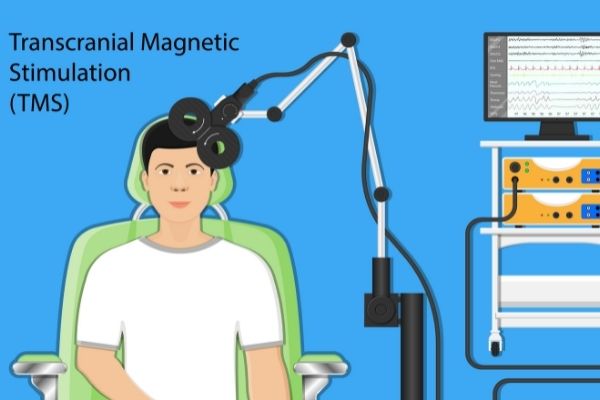
If you experience an anxiety disorder, no doubt you’re looking for relief. Generally, the most common treatments for anxiety have been medication, psychotherapy, or a combination of both. But there’s a new brand of treatment currently being explored by the medical profession. Transcranial magnetic stimulation (TMS) is a process that uses special equipment to stimulate and activate brain cells to get the brain to help itself. If your doctor has mentioned TMS as a potential treatment, here’s what to know about TMS therapy for anxiety.
TMS Therapy Is Noninvasive
First, throw any images of Frankenstein machinery, electric shocks, and surgery out of your head. TMS requires no invasive procedures or processes to work. You won’t have to go under or be sedated. The doctor doesn’t need to access your brain via surgery or add attachments or internal probes. During the procedure, the patient relaxes comfortably while the device delivers a concentrated magnetic pulse on part of the brain. There is no pain. The pulse merely works to adjust the electrochemical communication between the neurons and their synapses.
How Long Does TMS Therapy Take?
While TMS therapy may need to be conducted daily and over the course of weeks to be effective, individual sessions last no longer than half an hour. When you arrive at the session, you will be seated and have a device comfortably attached to your head to deliver the pulses. On average, you may need to come in for five or more sessions a week and return over the course of four to six weeks. While this can be a scheduling challenge, it is necessary to be sure the therapy takes effect. During this time, you may even notice a change in your feelings of anxiety and behavior. Experts continue to do work to reduce the number of treatments needed, compiling data about the results of individual patients’ therapies and their results.
What Are the Side Effects?
Side effects are always a justified concern for patients. Here’s what else to know about TMS therapy for anxiety and its potential side effects: in general, the evidence suggests that TMS therapy for anxiety has no side effects on most patients. A few studies suggest that some patients may feel increased anxiety when TMS is used to treat depression and panic disorders, but this needs to be further investigated to see if it’s the TMS causing anxiety or simply people feeling anxious about a new treatment. Overall, there’s no proof that TMS worsens a patient’s condition. Also, like any therapy, it’s all done under a physician’s watchful eye. In fact, most patients report feeling better after their sessions are complete and sometimes in the midst of them. Other side effects can involve slight dizziness, headaches, and tingling, but these often fade quickly.
If you’re interested in pursuing TMS therapy for anxiety or other conditions, discuss it with your doctor, neurologist, or healthcare provider.

